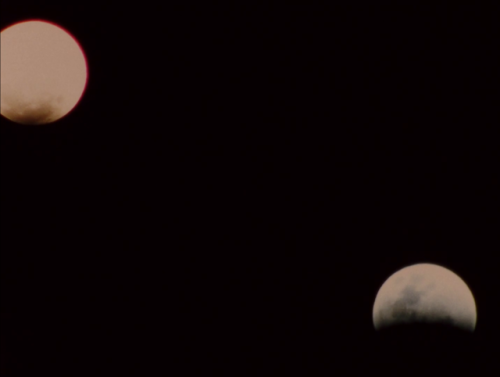Neptune From Voyager 2 By NASA

Neptune from Voyager 2 by NASA
More Posts from Sidusglacies and Others
Video Clip SS2935432 (Supercell Thunderstorm, timelapse)
Timelapse footage of a Supercell thunderstorm with multiple lightning flashes.
A supercell is a large rotating storm system that often produces heavy rain, hail and sometimes tornadoes. The supercell is centred on a very powerful updraft, which lifts warm, moist air to high altitude. It cools as it rises, condensing and falling as precipitation.
The base of the cloud is marked by a shelf cloud extending forwards, and a low wall cloud at the updraft/downdraft interface. This supercell was filmed in Kansas, USA, in June 2015. Such storms are most common in this region in spring and early summer.
Supercells are often put into three classification types: Classic, Low-precipitation (LP), and High-precipitation (HP). LP supercells are usually found in climates that are more arid, such as the high plains of the United States, and HP supercells are most often found in moist climates.
Supercells can occur anywhere in the world under the right pre-existing weather conditions, but they are most common in the Great Plains of the United States in an area known as Tornado Alley and in the Tornado Corridor of Argentina, Uruguay and southern Brazil.
© Roger Hill / Science Source

ENCELADUS: TIGER STRIPES AND THE CHANCE FOR LIFE Discovered by William Hershel in 1789, Enceladus is the sixth largest moon of Saturn. It appears as a small, faint speck through a telescope and until recently not much was known about this mysterious world.
Keep reading


Lenticular Clouds
Fiordo Última Esperanza, Magallanes & La Antartica Chilena.

The speed of light between Earth and Moon in real time
via reddit

Where clouds form. Understanding Our World. Book 2. 1947. Internet Archive


Altiplano (Malena Szlam, 2018)

Cielo Stellato Settentrionale - G.B. Paravia, (1920)

NASA’s Hubble Celebrates 21st Anniversary with “Rose” of Galaxies by NASA Goddard Photo and Video

i miss you all the time i miss you all the time
-
 monaxiamouola reblogged this · 8 months ago
monaxiamouola reblogged this · 8 months ago -
 monaxiamouola liked this · 8 months ago
monaxiamouola liked this · 8 months ago -
 schwarzebrandung liked this · 11 months ago
schwarzebrandung liked this · 11 months ago -
 schwarzebrandung reblogged this · 11 months ago
schwarzebrandung reblogged this · 11 months ago -
 slumsaintt reblogged this · 1 year ago
slumsaintt reblogged this · 1 year ago -
 horroryears reblogged this · 1 year ago
horroryears reblogged this · 1 year ago -
 kai-dlugosch liked this · 1 year ago
kai-dlugosch liked this · 1 year ago -
 evildreamgirll liked this · 1 year ago
evildreamgirll liked this · 1 year ago -
 messiers reblogged this · 2 years ago
messiers reblogged this · 2 years ago -
 americanabyss reblogged this · 2 years ago
americanabyss reblogged this · 2 years ago -
 0bsidianstar reblogged this · 2 years ago
0bsidianstar reblogged this · 2 years ago -
 angryblondewithajetblackheart liked this · 2 years ago
angryblondewithajetblackheart liked this · 2 years ago -
 aire-frio reblogged this · 2 years ago
aire-frio reblogged this · 2 years ago -
 1iwantcandy1 liked this · 2 years ago
1iwantcandy1 liked this · 2 years ago -
 osveta liked this · 2 years ago
osveta liked this · 2 years ago -
 osveta reblogged this · 2 years ago
osveta reblogged this · 2 years ago -
 059004a liked this · 2 years ago
059004a liked this · 2 years ago -
 huliepte liked this · 2 years ago
huliepte liked this · 2 years ago -
 wwwwln liked this · 2 years ago
wwwwln liked this · 2 years ago -
 cheosalang reblogged this · 2 years ago
cheosalang reblogged this · 2 years ago -
 nightmare-00 liked this · 2 years ago
nightmare-00 liked this · 2 years ago -
 el-mino liked this · 2 years ago
el-mino liked this · 2 years ago -
 grof-edmont-dantes reblogged this · 2 years ago
grof-edmont-dantes reblogged this · 2 years ago -
 grof-edmont-dantes liked this · 2 years ago
grof-edmont-dantes liked this · 2 years ago -
 batweirdestweirdo reblogged this · 2 years ago
batweirdestweirdo reblogged this · 2 years ago -
 buxomblues reblogged this · 2 years ago
buxomblues reblogged this · 2 years ago -
 beautifullgodzilla reblogged this · 2 years ago
beautifullgodzilla reblogged this · 2 years ago -
 beautifullgodzilla liked this · 2 years ago
beautifullgodzilla liked this · 2 years ago -
 benjaandco reblogged this · 2 years ago
benjaandco reblogged this · 2 years ago -
 ninaizantina reblogged this · 2 years ago
ninaizantina reblogged this · 2 years ago -
 ninaizantina liked this · 2 years ago
ninaizantina liked this · 2 years ago -
 haklisinseff liked this · 2 years ago
haklisinseff liked this · 2 years ago -
 im-ricci reblogged this · 2 years ago
im-ricci reblogged this · 2 years ago -
 watmoed reblogged this · 2 years ago
watmoed reblogged this · 2 years ago -
 svovl liked this · 2 years ago
svovl liked this · 2 years ago -
 eliseo-93 liked this · 2 years ago
eliseo-93 liked this · 2 years ago
